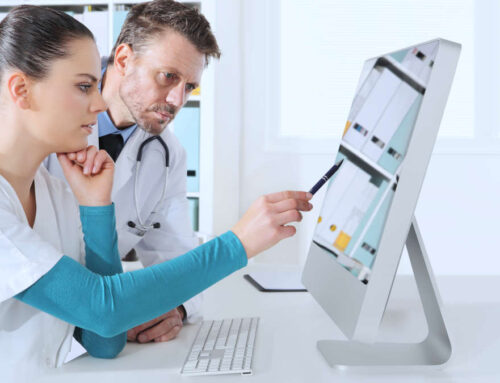This year too was held the European Pharmacovigilance Congress, which arrived at its fourth edition. Peculiarity of this year is the virtuality of the event, which nevertheless gave the opportunity to participate to even more people from all over the world.
Here is how the two days went.
Some of the most experienced international speakers gave birth to 10 interesting sessions:
1. Updates from international pharmacovigilance organizations
2. Signal detection & evaluation
3. Digital & technology innovation in PV: opportunities for patients
4. Drug induced liver injury (DILI)
5. Clinical trials regulation
6. Communication in drug safety
7. Pharmacoepidemiology & risk management
8. EudraVigilance/EVDAS updates
9. PV quality system
10. Local vs global PV regulations
Here is what emerged.
1. Updates from international pharmacovigilance organizations
The event started with some updates from the main pharmacovigilance organizations such as CIOMS, ISoP, Uppsala Monitoring Centre and PIPA.
Prof Herve Le Louët, president of CIOMS, shared the most recent articles (https://cioms.ch/publications/product-category/recently-published/) and communicated the possibility to attend the e-training course for all the body subscribers (https://cioms.blendleren.nl/login.html).
He moreover highlighted the 5 ongoing working groups today:
– CIOMS Working Group on Clinical Research in Resource Limited Settings (November 2017)
– CIOMS Working Group on Patient Involvement in Development and Safe Use of Medicines (April 2018) – WG XI
– CIOMS Expert Working Group on MedDRA Labelling Groupings (MLGs) (April 2019)
– Revision of CIOMS IV: Benefit Risk Balance for Marketed Drugs: Evaluating Safety Signals (September 2019) – WG XII
– CIOMS Working Group on Real World Evidence and Real World Data in Regulatory Decision (March 2020) – WG XIII
– CIOMS Working Group on Severe Cutaneous Adverse Reactions (SCARS) – Q3 2020
Jan Petracek, ISoP Advisory Board International Society of Pharmacovigilance, reminded the importance to be ISoP members in order to have access to the training and be constantly up-to-date.
Sarah Hall HonFPIPA, MRQA, Managing Director MIPSOL, gave some updates from PIPA remembering that are always present guides and training.
Daniele Sartori, Pharmacovigilance Scientist at Uppsala Monitoring Centre e student DPhil in Evidence Based Medicine at University of Oxford, reported the list of the last 12 articles published by the UMC and showed how the Upsala Monitoring Centre observed Covid-19.
2. Signal detection & evaluation
The second session was instead dedicated to the signal detection.
Daniele Sartori reported the UMC signal detection processes, while Arduino Mangoni, Professor and Head, Dep. Of Clinical Pharmacology, School of Medicine at Flinders University in Australia, argued, in addition, on the need to include the elderly population in clinical studies, usually excluded due to the difficulty of realizing the real risks/benefits, especially in cases of patients undergoing multiple treatments. Finally, Glyn Belcher, CEO of PV Consultancy Ltd, brought some practical examples of signal search in different fields, such as the Rofecoxib: while performing the signal detection in clinical and preclinical studies it was found an increased risk of cardiovascular events from the double-blind placebo-controlled study in polyposis coli.
3. Digital & technology innovation in PV: opportunities for patients
In this third session Juergen Schmider, President of drug and device supervision at Consulting LLC, showed how technology can help and simplify certain pharmacovigilance activities such as, for example, ICSR capture, signal detection and aggregate reports.
4. Drug induced liver injury (DILI)
Marco Tuccori, Unit of Adverse Drug Reactions Monitoring, University Hospital of Pisa, during his speech in the fourth session highlighted the issue of the presence on the market of many drugs for which the hepatotoxic potential is unclear. Indeed, pre-clinical models of liver toxicity are scarcely predictive of hepatotoxic potential because the majority of drugs can cause liver injuries with idiosyncratic mechanisms. The clinical trials could have a big potential in identifying with a good approximation the drugs that will cause severe liver injury when used in the general population, but given the rarity of idiosyncratic reactions and the limitation of the sample, the population enrolled in clinical trials cannot capture these events. It is fundamental to activate a post-marketing monitoring of DILI upon approval and a plan of risk management.
Glyn Belcher too underlined the importance of an accurate adverse reaction and signal monitoring, examinating the Pioglitazone case, in which studies detected significant hepatotoxicity. While it is fundamental that prescribers and patients are informed about adverse reactions, this can sometimes be counterproductive as patients may refuse to take the medicine due to concern about possible serious side effects.
Mario Bertazzoli, Director, Group Head of Drug Safety and Reference Physician to EU QPPV at Helsinn Healthcare SA, brought the Nimesulide case study, showing the evolution of its use in the year after the emergence of adverse reactions. After years of debate, that led to safety measures such as specifying the duration of treatment and reducing the concomitant intake of potential hepatotoxic products, it has been finally confirmed by EMA that its benefits outweigh the risks. Risk minimization actions were also introduced such as studies on the use of drugs, education of prescribers on the correct use of Nimesulide through informative materials, “Direct Healthcare Professional” letters and ad hoc training sessions.
5. Clinical trials regulation
Elena Prokofyeva, Head of drug safety Unit, DG PRE Autorization/Division R&D (Humain) Federal agency for medicines and health products in Bruxelles, spoke about Clinical Trials Regulation 536/2014 clarifying that not all EU member states are ready and that the CTIS security module is not yet ready for go-live.
6. Communication in drug safety
Giovanni Furlan, Safety Risk Lead Director di Pfizer, presented an interesting intervention on how unclear communication on adverse reactions can negatively affect patients. A clear example of this is the nocebo effect, a negative conditioning by patients with respect to a certain drug with a consequent adverse event given by suggestion. A solution – Furlan reports – could be a clearer communication of adverse reactions through numbers and infographics in the drug labeling so as to better understand the real probability of adverse reaction risk to adverse patients.
7. Pharmacoepidemiology & risk management
The speech of Jan Petracek aimed at the risk minimization plan, inviting to follow 6 simple steps for a successful plan:
1. Risk identification
2.Goal setting
3. Healthcare system integration (globally and locally)
4. Burden consideration
5. Evidence-based risk minimisation
6. Proportionality
He moreover gave 5 tips for Risk Minimisation:
1. Make a Risk Minimisation Burden Analysis
2. Avoid commercial bias
3. Perform piloting and testing
4. Negotiate a local implementation of your global plan
5. Ensure planning for success
8. EudraVigilance/EVDAS updates
Calin Lungu, MDMRQA, BCPM, Eudravigilance and XEVMPD – EMA, CEO, DDCS in the eighth session analysed the EudraVigilance Operational Plan published in March 2020. What emerged from his speech is that as the SPOR (Substance, Product, Organisation and Referential data) components are still being implemented, XEVMPD will continue to be used, after which the XEVMPD data will be converted by EMA into the ISO IDMP format and migrated to SPOR.
9. PV quality system
Raj Bhogal, Sr. Director, R&D Audits & Inspections at Jazz Pharmaceuticals explained how to deal with inspections, showed what the most common findings have been in recent years and what are the consequences of poor inspections.
Some ways to being prepared are to train staff, to ensure compliance and to prepare all necessary documentation in advance so that any gaps can be remedied in time.
The findings and the majors found in the last 3 years are mainly related to risk management, quality management system and ongoing safety assessment. What could result from poor inspections could be remedies with more onerous efforts, possible negative impact on future approvals and in more serious cases license suspension or revocation or even seizure.
10. Local vs global PV regulations
Phillip Eichorn, Senior director, Pfizer Pharmaceuticals, turned his attention to Patient Support Programs and Market Research, very useful tools to understand how a drug is perceived from the consumer’s point of view and, with adequate training of the staff, intercept safety information such as lack of efficacy, any OFF-label use or administration errors. The important is to know how to filter the data and not get confused by “littering” the database with inappropriate cases.
Margherita D’Antuono, Corporate PV Director, EU QPPV, Italfarmaco instead explained what the PSMF is and what the requirements are for non-EU countries and how to organize and manage it. Here are the 4 key points:
1. Build a clear global structure of the pharmacovigilance organization
2. Act a written delegation
3. Supervise the cascade system
4. Issue a dedicated function.
At the end of the event, we can say that this year the quality of the topics presented by the speakers was excellent and the congress from the point of view of attendance was a success: another great triumph of which we were witnesses and sponsors.







